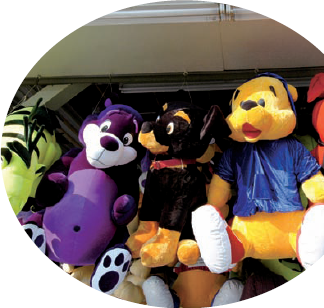Chapter 10. Composition and dSLRs
In This Chapter
Understanding composition basics
Shooting portrait poses and other people shots
Snapping publicity and PR photos
Photographing architecture and landscapes extraordinaire
Taking travel shots for gadabouts
In some respects, a digital SLR makes achieving good composition a tiny bit easier than with non-SLR cameras, even though the eye and skills of the photographer bear the final responsibility. Some photographers say, with justification, that good composition should be exactly the same, whether you're using a digital SLR or the least-expensive point-and-shoot camera. Other photographers say that those folks need to spend more time using a dSLR. Some significant differences exist between composing photos with a snapshooting camera and a digital single-lens reflex, the primary one being that you can do it.

Your basic non-SLR camera might rely on a tiny LCD (liquid crystal display) that's about 3 inches diagonally. This LCD is easily washed out in bright light, might be too dim to view under reduced illumination, and is grainy and subject to ghost images if the camera or subject moves. It might display only 85 percent or less of the actual subject matter (although most provide a 90- to 100-percent view these days) and it probably turns off after a minute or two because it hogs so much power. And that's the good news.
The bad news is that these ...
Get Digital SLR Cameras & Photography For Dummies®, 3rd Edition now with the O’Reilly learning platform.
O’Reilly members experience books, live events, courses curated by job role, and more from O’Reilly and nearly 200 top publishers.

